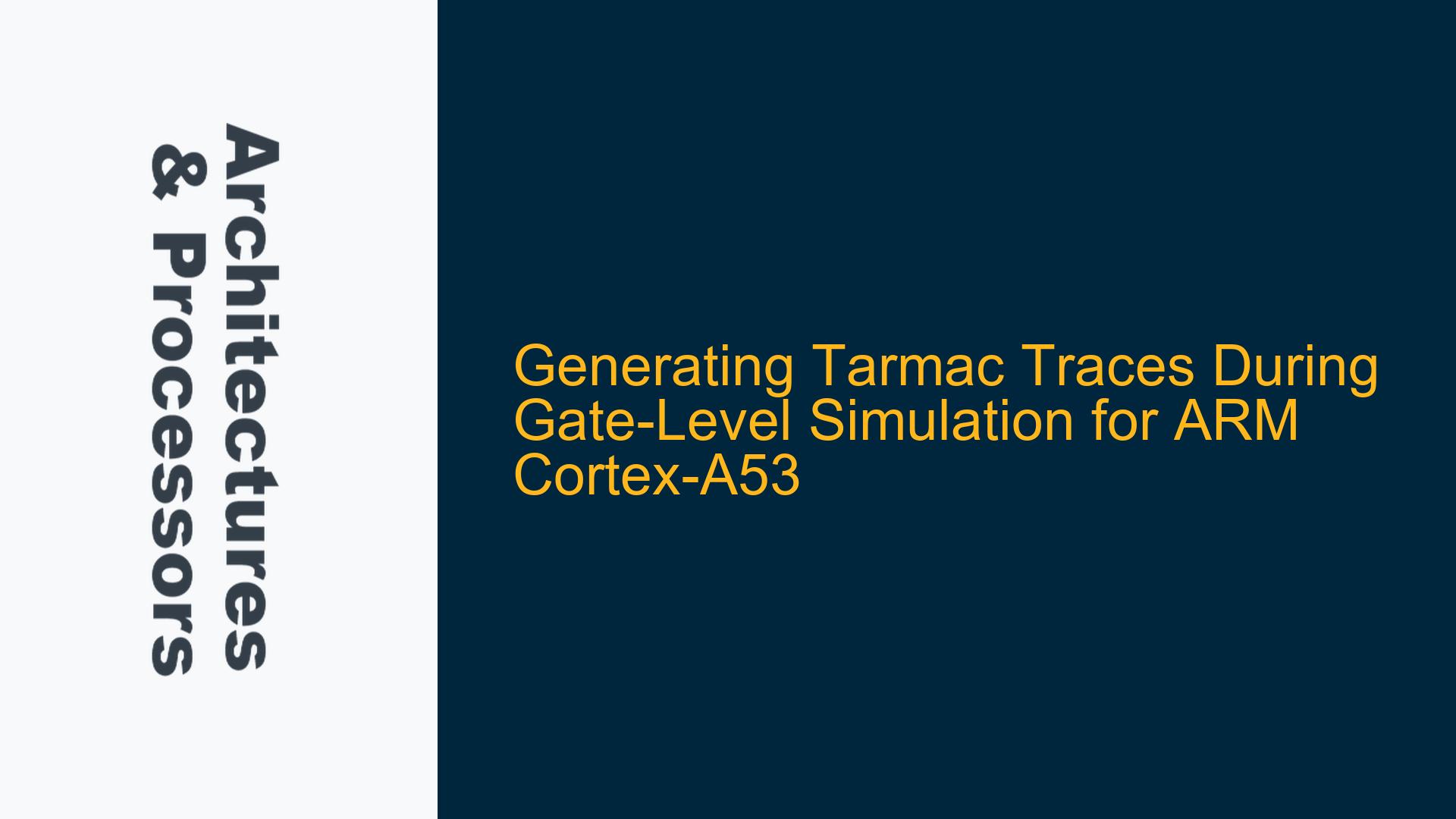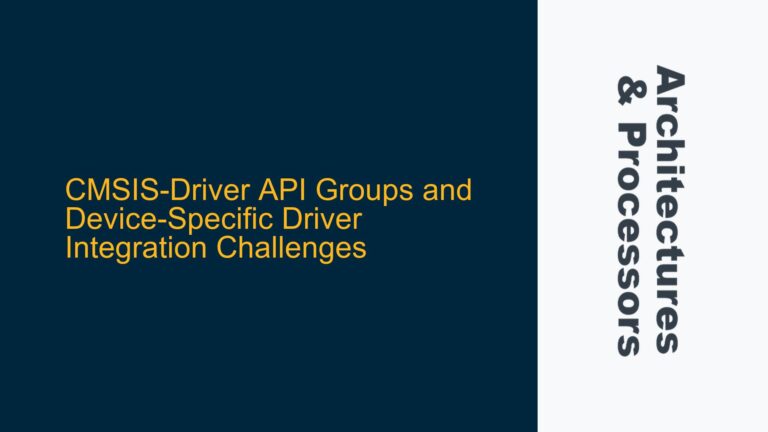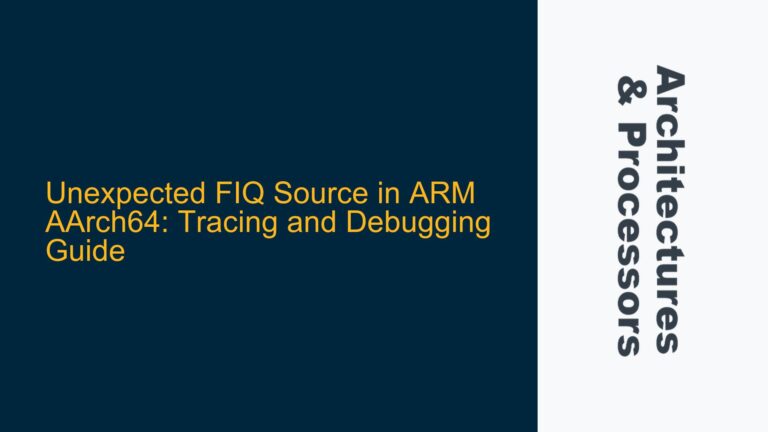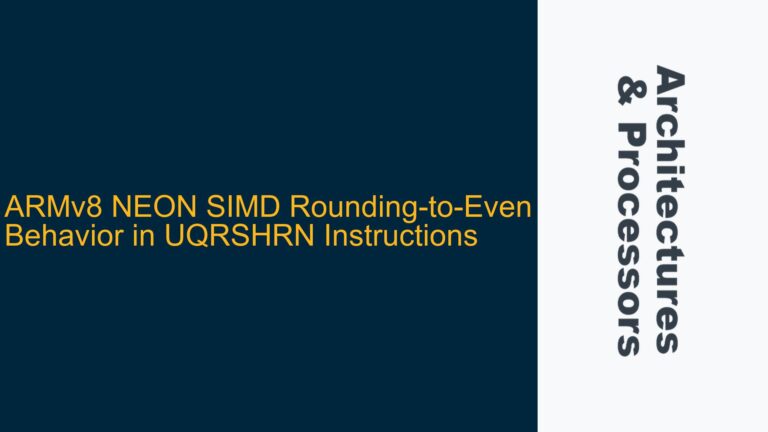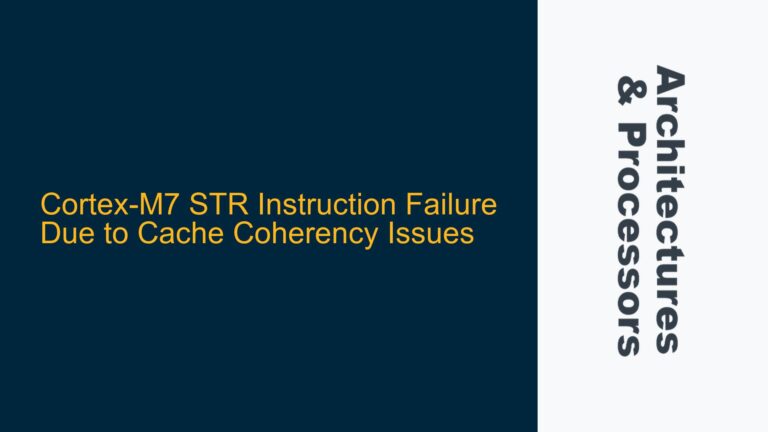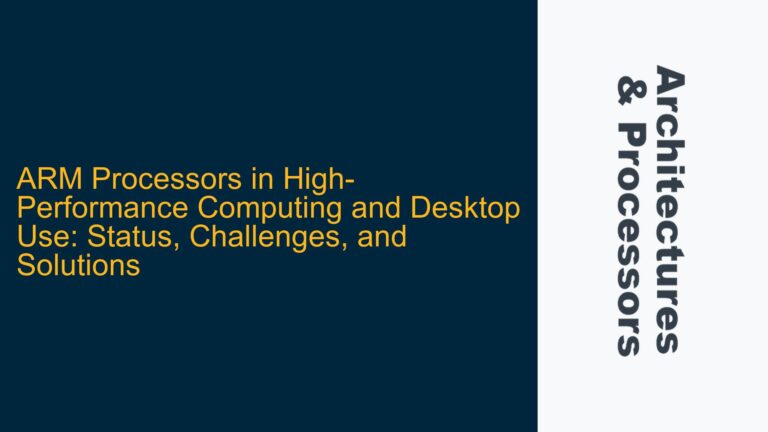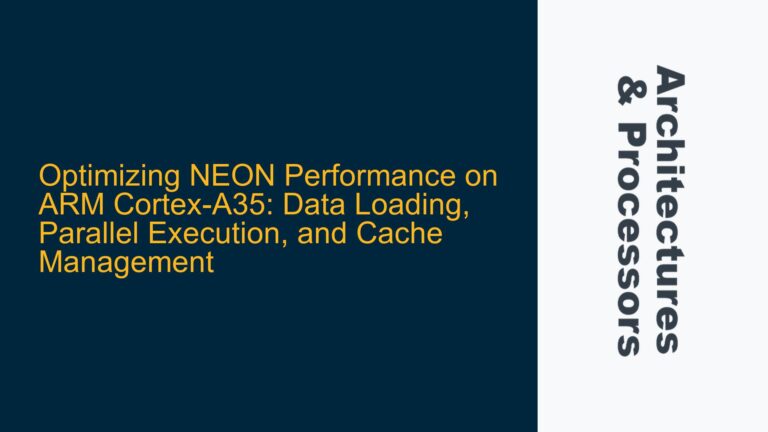ARM Cortex-A53 Tarmac Trace Generation in Gate-Level Simulation
The generation of Tarmac traces during gate-level simulation for ARM Cortex-A53 processors is a complex but critical task for debugging and performance analysis. Tarmac traces provide a detailed log of the processor’s execution, including instruction flow, register updates, and memory accesses. While Tarmac traces are typically generated during RTL simulation, generating them during gate-level simulation presents unique challenges due to the differences in simulation environments and the level of abstraction.
In RTL simulation, the design is represented at the register-transfer level, where the behavior of the system is described in terms of data flow between registers and the logical operations performed on that data. This level of abstraction allows for relatively straightforward generation of Tarmac traces, as the simulation environment can directly observe and log the execution of instructions and the state of the processor.
Gate-level simulation, on the other hand, involves simulating the design at the level of logic gates and flip-flops, which is a much lower level of abstraction compared to RTL simulation. This level of simulation is typically used to verify the timing and functionality of the design after synthesis, where the RTL description has been transformed into a netlist of standard cells. The gate-level simulation environment is less conducive to generating Tarmac traces because the high-level information about instruction execution and register updates is not directly observable in the same way as in RTL simulation.
The primary challenge in generating Tarmac traces during gate-level simulation is the lack of direct access to the high-level execution information that is required to generate the trace. In RTL simulation, the simulation environment can directly monitor the execution of instructions and the state of the processor’s registers and memory. In gate-level simulation, this information is embedded in the low-level signals of the netlist, making it difficult to extract and reconstruct the high-level execution trace.
Differences in Simulation Environments and Trace Generation Mechanisms
The differences between RTL and gate-level simulation environments are significant when it comes to generating Tarmac traces. In RTL simulation, the simulation environment is typically aware of the high-level structure of the design, including the processor’s instruction set architecture (ISA), register file, and memory hierarchy. This awareness allows the simulation environment to generate Tarmac traces by directly observing the execution of instructions and the state of the processor.
In gate-level simulation, the simulation environment operates at the level of logic gates and flip-flops, which means that the high-level structure of the design is not directly observable. The simulation environment sees only the low-level signals that represent the behavior of the logic gates and flip-flops. This makes it difficult to generate Tarmac traces because the high-level execution information must be inferred from the low-level signals.
One of the key differences between RTL and gate-level simulation is the way in which the processor’s execution is represented. In RTL simulation, the execution of instructions is represented as a sequence of high-level operations, such as fetching an instruction, decoding it, executing it, and updating the processor’s state. In gate-level simulation, the execution of instructions is represented as a sequence of low-level signal transitions, such as the propagation of signals through logic gates and the clocking of flip-flops.
The lack of direct access to high-level execution information in gate-level simulation means that generating Tarmac traces requires a different approach. One possible approach is to instrument the gate-level netlist to capture the necessary information for generating Tarmac traces. This could involve adding additional logic to the netlist to monitor the state of the processor’s registers and memory, as well as the execution of instructions.
Another approach is to use a hybrid simulation environment that combines RTL and gate-level simulation. In this approach, the high-level execution information is captured during RTL simulation, and the gate-level simulation is used to verify the timing and functionality of the design. The Tarmac traces generated during RTL simulation can then be correlated with the results of the gate-level simulation to ensure that the design behaves correctly at both levels of abstraction.
Instrumenting the Gate-Level Netlist for Tarmac Trace Generation
Instrumenting the gate-level netlist for Tarmac trace generation involves adding additional logic to the netlist to capture the necessary information for generating the trace. This can be a complex and time-consuming process, but it is necessary to ensure that the Tarmac traces accurately reflect the execution of the processor during gate-level simulation.
The first step in instrumenting the gate-level netlist is to identify the signals that correspond to the processor’s registers, memory, and instruction execution. This requires a detailed understanding of the processor’s architecture and the structure of the netlist. Once the relevant signals have been identified, additional logic can be added to the netlist to monitor these signals and capture the necessary information for generating Tarmac traces.
One approach to instrumenting the netlist is to use a set of custom modules that are inserted into the netlist to monitor the relevant signals. These modules can be designed to capture the state of the processor’s registers and memory, as well as the execution of instructions. The captured information can then be output as a Tarmac trace during gate-level simulation.
Another approach is to use a commercial tool that supports Tarmac trace generation during gate-level simulation. Some simulation tools provide built-in support for generating Tarmac traces, either by directly monitoring the relevant signals in the netlist or by using a hybrid simulation approach that combines RTL and gate-level simulation. These tools can simplify the process of generating Tarmac traces during gate-level simulation, but they may require additional configuration and setup.
Regardless of the approach used, instrumenting the gate-level netlist for Tarmac trace generation requires careful planning and execution. The added logic must be designed to minimize the impact on the timing and functionality of the design, and the captured information must be accurate and complete to ensure that the Tarmac traces are useful for debugging and performance analysis.
Hybrid Simulation Approach for Tarmac Trace Generation
A hybrid simulation approach that combines RTL and gate-level simulation can be an effective way to generate Tarmac traces while still verifying the timing and functionality of the design at the gate level. In this approach, the high-level execution information is captured during RTL simulation, and the gate-level simulation is used to verify that the design behaves correctly at the lower level of abstraction.
The first step in the hybrid simulation approach is to generate Tarmac traces during RTL simulation. This is typically straightforward, as the RTL simulation environment can directly observe the execution of instructions and the state of the processor’s registers and memory. The generated Tarmac traces can then be used as a reference for the gate-level simulation.
During gate-level simulation, the design is simulated at the level of logic gates and flip-flops, and the timing and functionality of the design are verified. The results of the gate-level simulation can then be compared with the Tarmac traces generated during RTL simulation to ensure that the design behaves correctly at both levels of abstraction.
One of the key advantages of the hybrid simulation approach is that it allows for the generation of Tarmac traces without the need to instrument the gate-level netlist. This can save time and effort, as the process of instrumenting the netlist can be complex and error-prone. Additionally, the hybrid simulation approach can provide a more comprehensive verification of the design, as it combines the benefits of both RTL and gate-level simulation.
However, the hybrid simulation approach also has some limitations. One limitation is that it requires both RTL and gate-level simulation environments, which can increase the complexity of the verification process. Additionally, the hybrid simulation approach may not be suitable for all designs, particularly those that require detailed timing analysis at the gate level.
Conclusion
Generating Tarmac traces during gate-level simulation for ARM Cortex-A53 processors is a challenging but important task for debugging and performance analysis. The differences between RTL and gate-level simulation environments make it difficult to generate Tarmac traces directly during gate-level simulation, but there are several approaches that can be used to address this challenge.
Instrumenting the gate-level netlist to capture the necessary information for generating Tarmac traces is one possible approach, but it requires careful planning and execution to ensure that the added logic does not impact the timing and functionality of the design. A hybrid simulation approach that combines RTL and gate-level simulation can also be effective, as it allows for the generation of Tarmac traces during RTL simulation while still verifying the design at the gate level.
Ultimately, the choice of approach will depend on the specific requirements of the design and the available resources. Regardless of the approach used, generating Tarmac traces during gate-level simulation requires a deep understanding of the processor’s architecture, the simulation environment, and the challenges associated with gate-level simulation. By carefully considering these factors and selecting the appropriate approach, it is possible to generate accurate and useful Tarmac traces for debugging and performance analysis.
